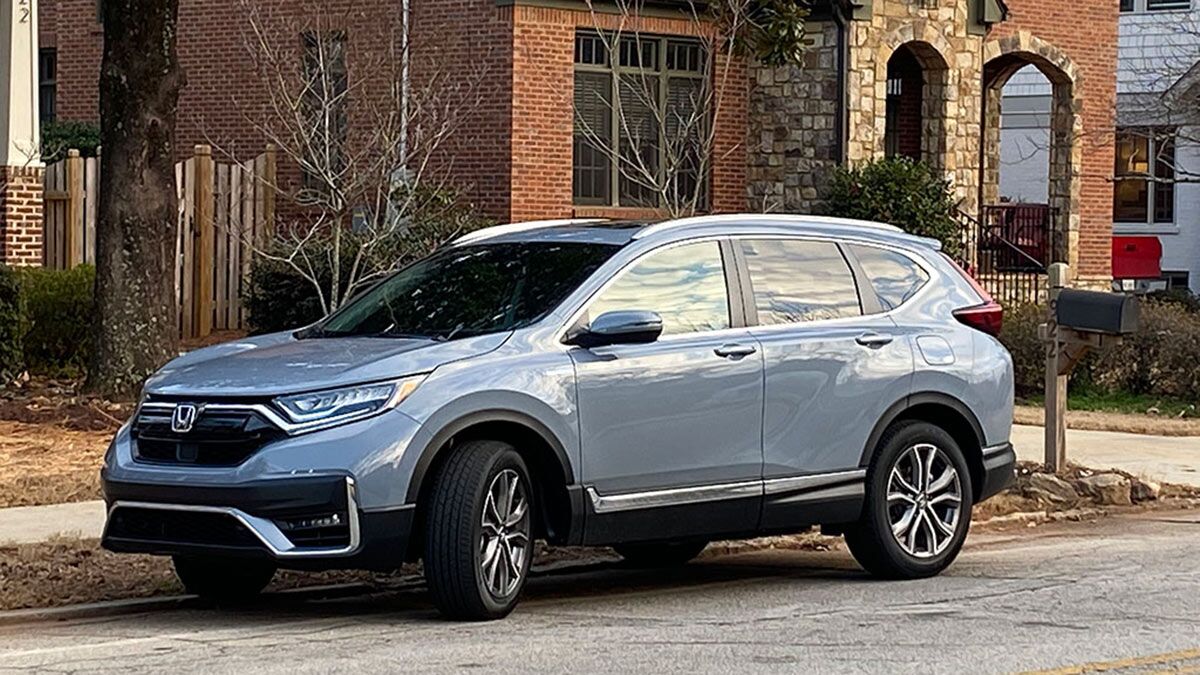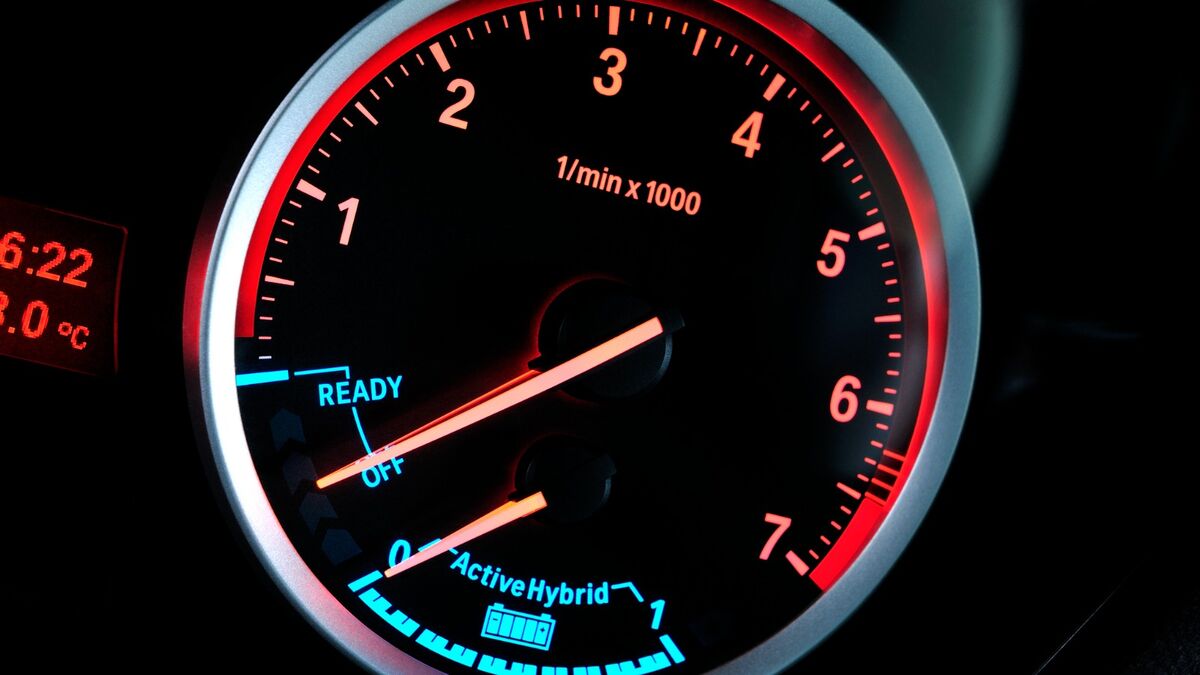Buying a Used Hybrid Car Quick Facts
- Escape new-car depreciation while enjoying hybrid fuel efficiency.
- Hybrid batteries often last 200,000 miles or more, but replacement can be costly, so check battery health and remaining warranty.
- Brakes and engines wear more slowly on hybrids, but repair costs may be higher than those of gas cars.
As with any used car, there are sound reasons for buying a used hybrid car, like freeing yourself from the burden of the first couple of years of heavy depreciation that comes with every new car. According to Autotrader data, the average 2-year hit on a new car is close to 30% of its value. The first-year drop is about 16%-20%.
However, a used hybrid offers one advantage other used cars do not: better fuel economy. On the other hand, they bear the specter of hybrid battery failure and replacement. The good news is that even used hybrids are more fuel-efficient than their gasoline-only counterparts. And unlike a fully electric vehicle (EV), range anxiety caused by watching a dropping charge-level gauge is a non-issue. Still, you’ll find plenty to weigh when considering a used hybrid car.
Our guide will cover the advantages and drawbacks of used hybrids, providing the information you need to put you behind the wheel of the hybrid vehicle that’s right for you.
- What Is a Hybrid Car?
- Is a Used Hybrid Worth It?
- Pros of Buying a Used Hybrid Car
- Cons of Buying a Used Hybrid Car
- What to Look for in a Used Hybrid Vehicle
- How to Find Used Hybrids for Sale
What Is a Hybrid Car?
A hybrid car sources its propulsion from a gasoline-fueled internal combustion engine (ICE) and an electric motor that draws its energy from electricity stored in a battery. There are two types of hybrids. The first is a traditional hybrid electric vehicle (HEV) that charges its hybrid battery with energy generated by the ICE and created by the regenerative brake system. In other words, it doesn’t require plugging into an outside source to charge its hybrid battery. The second hybrid type is a plug-in hybrid electric vehicle (PHEV) that can travel solely on battery power for short distances (20-50 miles). However, charging its battery requires plugging into an external electricity source. We are basing this conversation on the pros and cons of the first type, the HEV.
RELATED: Should I Buy a Hybrid Car in 2025?
Do Hybrid Cars Use Gas?
Yes, hybrid cars use gas to fuel an engine that works in tandem with a battery-powered electric motor.
Can Hybrid Cars Run Without Gas?
Generally, no; most traditional HEV hybrid cars or SUVs will only operate when there is gas in the tank. Although some HEV models can travel at low speeds for very short distances on battery power alone, they aren’t engineered to operate without the support of the combustion engine.
Is Buying a Used Hybrid Worth It?

The answer is yes. At the very least, it’s worth researching. Hybrids have been around for more than 20 years. Much of the appeal of hybrids boils down to a numbers game. A hybrid will almost certainly go a longer distance on a gallon of gas than its gasoline counterpart. In other words, its main advantage is that it will save you money on fuel.
When new, a hybrid typically costs more than a gasoline model. This fact also applies to used hybrids. Admittedly, there are many more variables for used vehicles than new models since the car’s condition, history, and mileage can drive down its value.
Still, a used hybrid can be a great alternative to a gasoline model.
Over the last decade, the number of hybrid models available has increased considerably. They’ve gone from just a handful of small hatchbacks to gasoline-electric versions of luxury sedans, SUVs, crossovers, and even pickup trucks. No matter the type of passenger vehicle, the odds are that a used hybrid version is available.
RELATED: Should You Buy an Electric Car or a Plug-in Hybrid?
Pros of Buying a Used Hybrid Vehicle

1. Increased Fuel Efficiency
The biggest draw is fuel economy. For instance, a 2020 Toyota Camry Hybrid LE can cost about $950 to fuel annually, compared to $1,500 for a non-hybrid version, according to the Environmental Protection Agency (EPA) estimates.
2. Great Value for Used vs. New Hybrid
When new, the hybrid version often costs $3,000 or more than all-gas counterparts, but that difference often shrinks for used models. Here are the Kelley Blue Book Fair Purchase Price of three 2021 used hybrid models versus the manufacturer’s suggested retail prices (MSRP) of the 2025 base hybrid models. Buying a lightly-used 2021 hybrid is a compelling value compared with paying MSRP for a 2025 model.
| Model | 2025 MSRP | 2021 KBB Fair Purchase Price | Savings vs. New |
| Toyota Camry | $29,795 | $22,972 | $6,823 |
| Honda Accord Hybrid EX-L | $36,090 | $26,143 | $9,947 |
| Honda CR-V Hybrid Sport | $36,045 | $25,002 | $11,043 |
Buying used can save you money. Additionally, when buying used, we suggest first checking out any certified pre-owned (CPO) models your local dealer may offer. CPO vehicles are typically lower-mileage models with a special limited warranty and other perks.
3. Less Wear and Tear on Brakes and Engine
Additionally, hybrid models can save you money on maintenance costs. Hybrid car braking systems, in particular, don’t work as hard since hybrids rely on their transmissions to create some drag. This drag captures otherwise lost energy and recharges the battery during deceleration. Additionally, hybrids pair an ultra-low-maintenance electric motor with a conventional gasoline engine. Thanks to the share of the power load on the hybrid motor, less stress is put on the engine.
Cons of Buying a Used Hybrid Car
1. Battery Drain
A hybrid’s large battery pack is its most significant advantage and primary liability. While tucked out of sight, these battery packs are integral to the vehicle’s operation. They are usually found under the rear seat or hidden in the cargo area. Like the battery used in your TV remote or laptop computer, the pack will eventually begin to wear out — a tired battery results in a less effective hybrid system, eroding fuel economy gains. Most experts say an average hybrid battery should last as long as 200,000 miles. Most new car hybrid battery warranties are for eight years or 100,000 miles, whichever comes first. However, some warranties are as long as 10 years or 150,000 miles.
2. Battery Replacement
Battery replacement can be expensive, though; in everyday use, packs should last 100,000 miles or more. The cost of fitting a new battery varies significantly by model. Still, it can range from as little as $1,500 for cars with simpler nickel-metal-hydride packs to as much as $8,000 for the latest lithium-ion packs built in today’s high-tech models.
However, in some cases, a technician can replace individual cells that may have gone bad rather than an entire battery pack. This partial fix can be a big money saver.
3. Battery Health
When shopping for a hybrid, determining the battery’s health is critical. Ask the dealership to plug in a diagnostic tool to give a detailed battery health report. Many newer models also offer information through the infotainment display.
A used hybrid may retain some of its original battery warranty, which offers coverage separate from (and usually longer than) the bumper-to-bumper warranty that may have expired. When in doubt, the automaker’s customer service department can tell you exactly how much of the warranty remains.
4. Gas Cars Are More Affordable Upfront
For number crunchers fixated on the cheapest version of a car, a used hybrid will almost always have a higher cost of entry, even if it may be cheaper to fill up over time. Here are comparisons (gas-powered vehicle vs. hybrid) of the original MSRP of four popular 2021 models. In each, the non-hybrid has a more affordable price.
| 2021 Model | Gas Original MSRP | Hybrid Original MSRP | Price Difference |
| Toyota Camry | $26,040 | $28,265 | $2,225 |
| Honda Accord | $25,985 | $27,585 | $1,600 |
| Honda CR-V | $30,585 | $31,785 | $1,200 |
| Hyundai Sonata | $24,955 | $28,755 | $3,800 |
| Ford Escape | $27,885 | $28,850 | $965 |
What to Look for in a Used Hybrid Vehicle
When you start shopping, you may want to cast a wide net to compare hybrid and non-hybrid models. Before beginning, check out our tips below to learn what to look for in a used hybrid.
- Compare the EPA fuel savings of several hybrids. Comparing the cars on the EPA’s FuelEconomy.gov site can also help break down the estimated refilling cost annually. Furthermore, you can use the EPA’s website to compare two entirely different hybrid models.
- Read original reviews. We recommend reading reviews on Autotrader to learn how the cars you are considering were received when new. Such reviews provide a contemporary glimpse into a vehicle’s weaknesses and strengths — a highly rated model when new will likely still be a good choice years later.
- Check the Kelley Blue Book Fair Purchase Price. You can learn what you should be paying for any used vehicle, including used hybrid cars, with Kelley Blue Book’s car valuation tool.
- Get a vehicle history report. As with any used car, a vehicle history report from AutoCheck or Carfax provides insight into a car’s past. Asking about service records can help you determine if the vehicle is reliable. Car history reports also reveal most major repairs and accident history. This small step to obtain a vehicle history report can save hundreds, if not thousands, of dollars over time. Most used car dealers will produce a vehicle history report upon request. If not, you can order one using the vehicle identification number (VIN).
- Ask a mechanic to inspect the vehicle. If the car has a solid vehicle history report, a pre-purchase inspection by a technician trained in hybrids can confirm that it’s as mechanically robust as reported. Services like Alliance Inspection Management’s AiM Certify, owned by Autotrader’s parent, Cox Automotive, will come to your location and inspect a vehicle.
- Research the cost of replacing the battery. When it comes to number crunching, researching hybrid battery replacement costs before purchasing a used hybrid car will minimize any surprises down the road if replacement becomes necessary. Factoring this into your long-term ownership costs makes sense.
- Test drive before buying. As with any car purchase, take the car for an extended test drive on roads familiar to you before signing on the dotted line.
How to Find Used Hybrids for Sale
On Autotrader, you can narrow your search specifically for hybrids or look at all versions of cars you like.
We recommend casting a wide net, perhaps by looking beyond where you live. Whether it’s a private owner or dealer sale, you can probably work out any logistical issues with research. Use an inspection service like AiM Certify that will send a local technician to inspect a used vehicle. Plenty of vehicle delivery services can help get the car to your home.
Editor’s Note: This article has been updated since its initial publication. Andrew Ganz contributed to the report.











Really appreciate this good compressed info Chris. I’m in the market for a hybrid and I and I can buy used because I telecommute and don’t really have to aside from being semi-retired!
This article was well-researched and provided a lot of valuable information. Thank you.